 1992 Volvo 850 (LS) Dimensions, Size & Specs
1992 Volvo 850 (LS) Dimensions, Size & SpecsMeasurements of the 1992 Volvo 850, engineered for optimal performance and comfort
| Dimensions | |
|---|---|
| Length: | 4660 mm183.5 in15.3 ft |
| Width: | 1761 mm69.3 in5.8 ft |
| Height: | 1400-1415 mm55.1-55.7 in4.6-4.6 ft |
| Trunk Capacity: | 445-455 liter15.7-16.1 cu ft |
| Weight Specifications | |
| Curb Weight: | 1330-1490 kg2932-3285 lbs |
| Maximal permitted Weight: | 1820-1960 kg4012-4321 lbs |
| Tire Specifications | |
| Rims Sizes: | 15-inch rims:
|
| Tire Sizes: |
|
The Volvo 850 (LS) sedan, produced from 1991 to 1997 with the 1992 model year exemplifying the generation, stands out as a sophisticated mid-size vehicle typical of early 1990s design. Measuring 4660 mm (183.5 inches) in length, this sedan offers a balanced presence on the road, with a width ranging narrowly between 1760 mm and 1761 mm (69.3 to 69.4 inches), and a height that varies from 1400 mm to 1415 mm (55.1 to 55.7 inches). These dimensions establish the 850 (LS) as spacious yet manageable, ideal for urban environments and longer drives alike. The curb weight of the car ranges from 1330 kg to 1490 kg (2932 to 3285 lbs), depending on specifications and equipment levels, while the maximum weight extends up to between 1820 kg and 1960 kg (4012 to 4321 lbs), reflecting its solid build quality typical of Volvo engineering. Practicality meets utility with a luggage capacity that spans from 445 to 455 liters (15.7 to 16.1 cubic feet), sufficient for family trips or daily use. The sedan rides on a selection of rim sizes including 6J x 15, 16, 17, and 15 inches, paired with tire sizes like 185/65 R15, 205/50 R16, 205/45 R17, and 195/60 R15, offering a variety of handling and comfort options. Overall, the Volvo 850 (LS) combines classic Volvo safety and reliability with dimensions that suit drivers seeking a mid-size sedan with ample room and a strong road presence.
Discover the standout features that make the 1992 Volvo 850 a leader in its class
Have a question? Please check our knowledgebase first.
The Volvo 850 (LS), produced from 1991 to 1997, features an overall length of 4660 mm (183.5 inches), a width ranging between 1760 and 1761 mm (69.3 to 69.4 inches), and a height of 1400 to 1415 mm (55.1 to 55.7 inches). These dimensions position the 850 as a midsize sedan with compact yet spacious external proportions. The relatively moderate height and width contribute to a stable driving experience while maintaining a comfortable cabin space for passengers. Its length provides ample interior room and trunk space, making it a practical choice for family transportation and daily commuting.
The Volvo 850 (LS) effectively replaced the Volvo 740 and 760 series, offering a significant evolution in design and size. Compared to its predecessors, the 850 is slightly larger in length and width, with its 4660 mm length (183.5 inches) and approximately 1760 mm width (69.3 inches), enhancing interior space and road presence. The design shift also improved aerodynamics and weight distribution, with curb weights varying between 1330 and 1490 kg (2932 to 3287 lbs), which were competitive for the midsize sedan segment during the 1990s. Overall, the 850 brought a more modern silhouette and technology upgrades while maintaining the robust build quality Volvo is known for.
The curb weight of the Volvo 850 (LS) ranges from 1330 to 1490 kg (2932 to 3287 lbs), varying based on the specific trim and equipment. This moderate weight plays a crucial role in the car's driving dynamics and fuel efficiency. A balanced curb weight helps the 850 deliver stable handling characteristics, contributing to a confident and comfortable ride. Heavier models tend to offer more stability at higher speeds, whereas the lighter variants can feel more agile. The relatively low curb weight for its class was possible due to the use of advanced materials and design efficiencies, which also contributed to decent fuel economy without compromising the car’s safety and durability.
The Volvo 850 (LS) has a maximum gross weight capacity ranging from 1820 to 1960 kg (4012 to 4321 lbs), which includes the vehicle's curb weight plus passengers, cargo, and any additional load. This capacity allows the sedan to comfortably seat up to five passengers while carrying a reasonable amount of luggage or goods. The weight limit is carefully balanced to maintain safety, performance, and braking efficiency. For owners, this means the Volvo 850 can reliably handle everyday family needs, road trips, and moderate cargo without overstressing the chassis or suspension, preserving the car’s longevity and driving quality.
The Volvo 850 (LS) offers a luggage capacity of approximately 445 to 455 liters (15.7 to 16.1 cubic feet), which is quite generous for a midsize sedan from the 1990s. This spacious trunk allows for large suitcases, grocery loads, or sports equipment, making it practical for family use and long-distance travel. Compared to other midsize sedans of its time, such as the BMW 3 Series E36 or the Mercedes-Benz C-Class W202, the Volvo 850 generally offers more trunk volume, emphasizing its focus on utility and passenger convenience. This practical cargo space contributes to the 850’s reputation as a functional and versatile vehicle.
Yes, the Volvo 850 (LS) fits comfortably in a standard size garage. Typical residential garages range from about 2400 to 2700 mm (94.5 to 106.3 inches) in width and around 4800 to 5400 mm (189 to 213 inches) in length. With the 850 measuring 4660 mm (183.5 inches) in length and around 1760 mm (69.3 inches) in width, it leaves ample space inside the garage for opening doors and maneuvering around the vehicle. Its height between 1400 and 1415 mm (55.1 to 55.7 inches) also poses no issues with typical garage door clearances. Owners can expect easy parking and storage without needing specialized or oversized garage accommodations.
The Volvo 850’s width of approximately 1760 mm (69.3 inches) and height ranging from 1400 to 1415 mm (55.1 to 55.7 inches) provide a balanced profile that positively impacts its driving dynamics. In urban environments, its moderate width allows for easy navigation through traffic lanes and parking spaces without feeling oversized. On highways, the broader stance offers improved stability and reduced body roll during cornering or at high speeds, contributing to a secure and composed driving feel. Meanwhile, its relatively low height helps reduce aerodynamic drag, enhancing fuel efficiency and minimizing wind noise. Overall, these dimensions support a versatile and comfortable driving experience on various road types.
The Volvo 850 (LS) came with various rim sizes, including 15, 16, and 17 inches, specifically 6J x 15, 16, 17, and 15-inch configurations. Corresponding tire sizes were 185/65 R15, 205/50 R16, 205/45 R17, and 195/60 R15. Larger rim and lower-profile tire combinations, such as the 17-inch with 205/45 profile, deliver sharper handling and improved road grip due to reduced sidewall flex but can slightly compromise ride comfort on rough roads. Smaller rims like the 15-inch with 185/65 tires provide a cushier ride and better absorption of bumps, ideal for everyday driving. These options allowed buyers to tailor the car's performance and comfort based on their preferences and conditions.
The Volvo 850 (LS) stands out among midsize sedans of the 1990s due to its blend of practical dimensions and spacious interior. It is comparable in length to competitors like the Audi A4 B5 (about 4520 mm) and BMW 3 Series E36 (around 4440 mm), but generally wider and with a more spacious trunk capacity of roughly 445-455 liters. This extra width translates to better shoulder room for passengers, enhancing comfort. Additionally, the 850's design emphasizes safety and durability, traits Volvo is renowned for, making it not only practical but also a reliable daily driver. Its variant rim and tire sizes also offered flexibility balancing comfort and sportiness, which wasn't always matched by rivals at this time.
The Volvo 850 (LS) was notable for introducing several innovative safety and design features during its production from 1991 to 1997. It was one of the first Volvos to offer side-impact protection systems, including reinforced door beams and side airbags in later models, establishing new safety standards for midsize sedans. The model embraced a boxy yet modern styling that maximized interior space and visibility. It also featured front-wheel drive with a transverse engine layout and was available with advanced multi-link rear suspension, improving ride comfort and handling balance. Technological advances like onboard trip computers, advanced climate control, and anti-lock braking systems further enhanced the driving experience and positioned the 850 as a forward-thinking choice in its segment.
Discover similar sized cars.
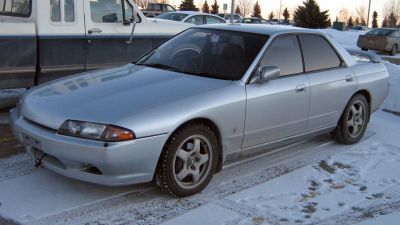
| Production: | 1989-1993 |
|---|---|
| Model Year: | 1989 |
| Length: | 4580 mm180.3 in |
| Width: | 1695 mm66.7 in |
| Height: | 1340-1360 mm52.8-53.5 in |
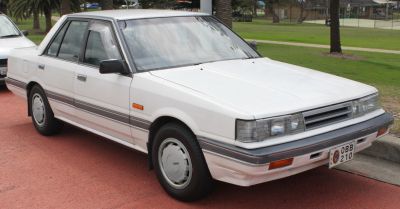
| Production: | 1985-1995 |
|---|---|
| Model Year: | 1985 |
| Length: | 4580 mm180.3 in |
| Width: | 1695 mm66.7 in |
| Height: | 1340 mm52.8 in |
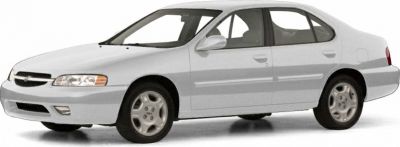
| Production: | 1998-2002 |
|---|---|
| Model Year: | 1998 |
| Length: | 4660 mm183.5 in |
| Width: | 1760 mm69.3 in |
| Height: | 1420 mm55.9 in |
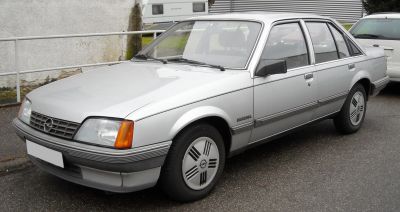
| Production: | 1982-1986 |
|---|---|
| Model Year: | 1982 |
| Length: | 4652 mm183.1 in |
| Width: | 1726 mm68.0 in |
| Height: | 1420 mm55.9 in |

| Production: | 2018-2020 |
|---|---|
| Model Year: | 2018 |
| Length: | 4720 mm185.8 in |
| Width: | 1815 mm71.5 in |
| Height: | 1465 mm57.7 in |
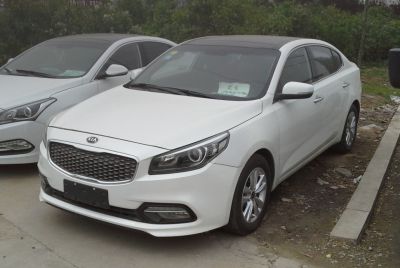
| Production: | 2014-2018 |
|---|---|
| Model Year: | 2014 |
| Length: | 4720 mm185.8 in |
| Width: | 1815 mm71.5 in |
| Height: | 1465 mm57.7 in |
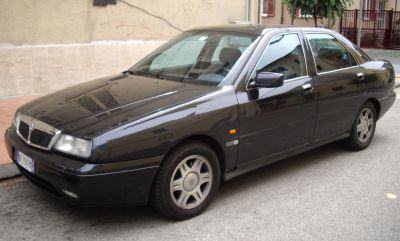
| Production: | 1994-2000 |
|---|---|
| Model Year: | 1994 |
| Length: | 4687 mm184.5 in |
| Width: | 1826 mm71.9 in |
| Height: | 1462 mm57.6 in |
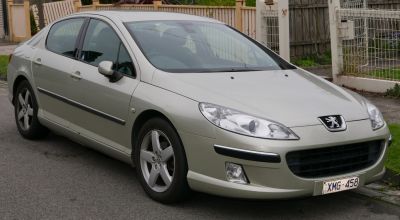
| Production: | 2004-2008 |
|---|---|
| Model Year: | 2004 |
| Length: | 4676 mm184.1 in |
| Width: | 1811 mm71.3 in |
| Height: | 1447 mm57.0 in |
